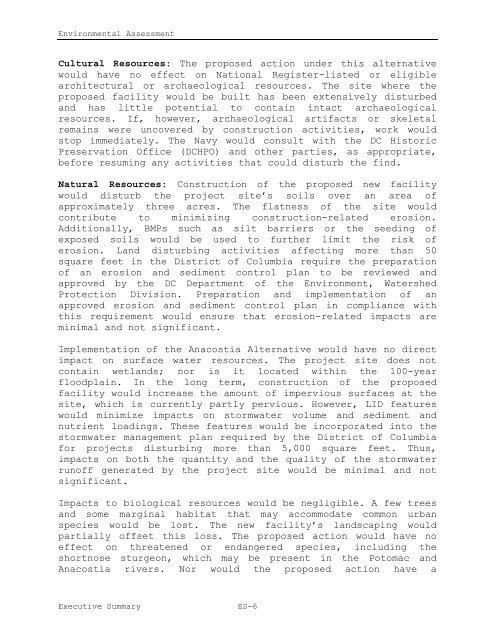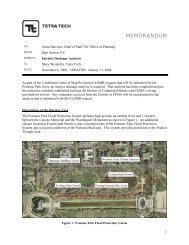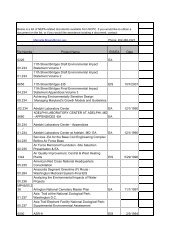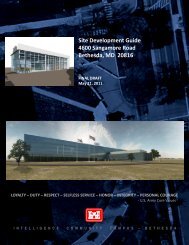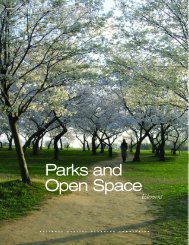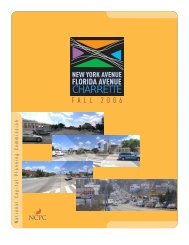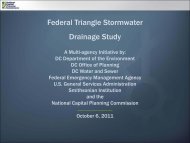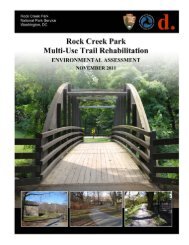Environmental Assessment - National Capital Planning Commission
Environmental Assessment - National Capital Planning Commission
Environmental Assessment - National Capital Planning Commission
You also want an ePaper? Increase the reach of your titles
YUMPU automatically turns print PDFs into web optimized ePapers that Google loves.
<strong>Environmental</strong> <strong>Assessment</strong><br />
Cultural Resources: The proposed action under this alternative<br />
would have no effect on <strong>National</strong> Register-listed or eligible<br />
architectural or archaeological resources. The site where the<br />
proposed facility would be built has been extensively disturbed<br />
and has little potential to contain intact archaeological<br />
resources. If, however, archaeological artifacts or skeletal<br />
remains were uncovered by construction activities, work would<br />
stop immediately. The Navy would consult with the DC Historic<br />
Preservation Office (DCHPO) and other parties, as appropriate,<br />
before resuming any activities that could disturb the find.<br />
Natural Resources: Construction of the proposed new facility<br />
would disturb the project site’s soils over an area of<br />
approximately three acres. The flatness of the site would<br />
contribute to minimizing construction-related erosion.<br />
Additionally, BMPs such as silt barriers or the seeding of<br />
exposed soils would be used to further limit the risk of<br />
erosion. Land disturbing activities affecting more than 50<br />
square feet in the District of Columbia require the preparation<br />
of an erosion and sediment control plan to be reviewed and<br />
approved by the DC Department of the Environment, Watershed<br />
Protection Division. Preparation and implementation of an<br />
approved erosion and sediment control plan in compliance with<br />
this requirement would ensure that erosion-related impacts are<br />
minimal and not significant.<br />
Implementation of the Anacostia Alternative would have no direct<br />
impact on surface water resources. The project site does not<br />
contain wetlands; nor is it located within the 100-year<br />
floodplain. In the long term, construction of the proposed<br />
facility would increase the amount of impervious surfaces at the<br />
site, which is currently partly pervious. However, LID features<br />
would minimize impacts on stormwater volume and sediment and<br />
nutrient loadings. These features would be incorporated into the<br />
stormwater management plan required by the District of Columbia<br />
for projects disturbing more than 5,000 square feet. Thus,<br />
impacts on both the quantity and the quality of the stormwater<br />
runoff generated by the project site would be minimal and not<br />
significant.<br />
Impacts to biological resources would be negligible. A few trees<br />
and some marginal habitat that may accommodate common urban<br />
species would be lost. The new facility’s landscaping would<br />
partially offset this loss. The proposed action would have no<br />
effect on threatened or endangered species, including the<br />
shortnose sturgeon, which may be present in the Potomac and<br />
Anacostia rivers. Nor would the proposed action have a<br />
Executive Summary<br />
ES-6


